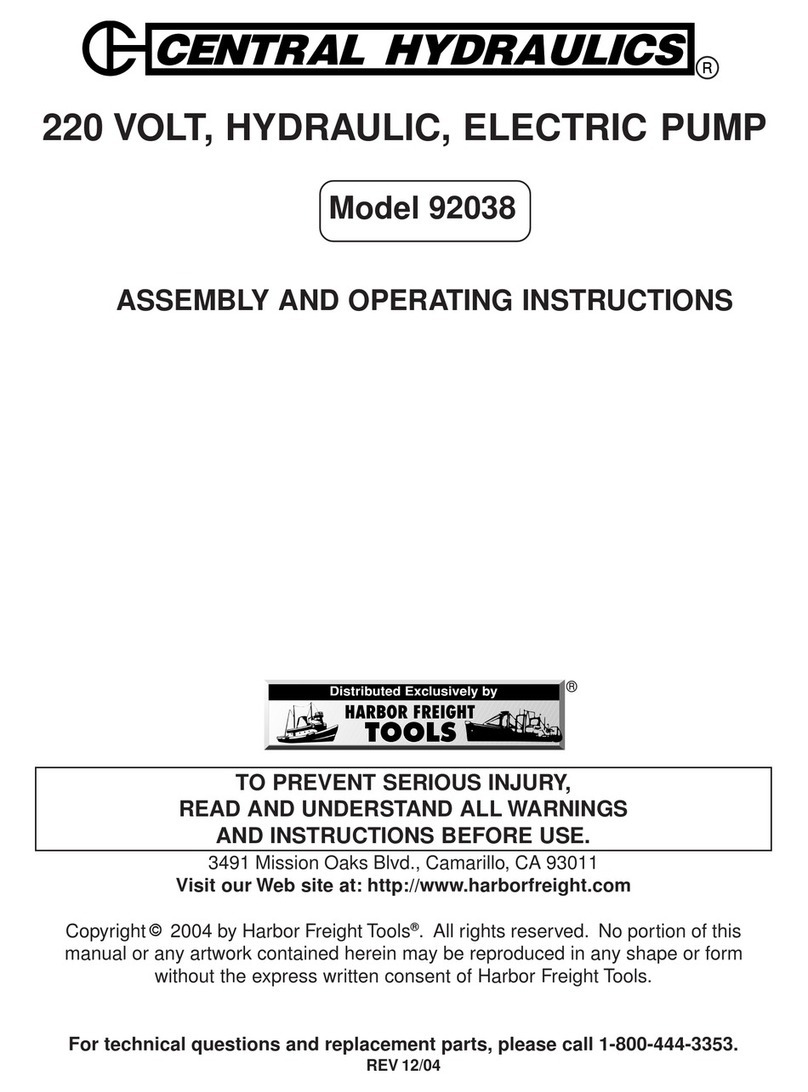
Specific Safety Instructions
1. The warnings and precautions
discussed in this manual cannot
cover all possible conditions and
situations that may occur. It must
be understood by the operator that
common sense and caution are
factors which cannot be built into this
product, but must be supplied by the
operator.
2. Do not adjust the factory set Safety
Valve. This valve should only be set
or reset by a qualified technician.
3. This air hydraulic Foot Pump must
be secured tightly to a stable surface
to prevent dynamic pressure from
moving it around during use. Make
sure there is no tripping hazard.
4. Follow manufacturer’s instructions for
compressor and attachments used.
5. Hydraulics must be opened
and serviced only by a qualified
technician.
6. Only use with hose (not included) and
other accessories rated to handle
the forces exerted by this tool during
operation. Other accessories not
designed for the forces generated
may break and forcefully launch
pieces.
7. Never press the end of the hose (not
included) against your skin or the
skin of another person or animal. It is
possible to inject fluids into your skin
if using this tool inappropriately.
8. Attach all accessories properly to the
tool before connecting the air supply.
A loose accessory may detach or
break during operation.
9. Obey the manual for the air
compressor used to power this tool.
10. Install in-line shutoff valve to allow
control over the air supply in an
emergency, even if a hose is
ruptured.
Vibration Precautions
This tool vibrates during use.
Repeated or long-term exposure to
vibration may cause temporary or
permanent physical injury, particularly to
the hands, arms and shoulders. To reduce
the risk of vibration-related injury:
1. Anyone using vibrating tools regularly
or for an extended period should
first be examined by a doctor and
then have regular medical check-
ups to ensure medical problems are
not being caused or worsened from
use. Pregnant women or people
who have impaired blood circulation
to the hand, past hand injuries,
nervous system disorders, diabetes,
or Raynaud’s Disease should not
use this tool. If you feel any medical
or physical symptoms related to
vibration (such as tingling, numbness,
and white or blue fingers), seek
medical advice as soon as possible.
2. Do not smoke during use. Nicotine
reduces the blood supply to the
hands and fingers, increasing the risk
of vibration-related injury.
3. Wear suitable gloves to reduce the
vibration effects on the user.
4. Use tools with the lowest vibration
when there is a choice between
different processes.
5. Include vibration-free periods each
day of work.
Page 5Item 58047 For technical questions, please call 1-888-866-5797.




























